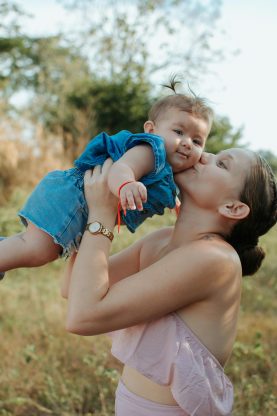Table of Contents
Creating a Safe Environment
One of the most important safety procedures for babysitters is to create a safe environment for the children. This includes ensuring that the home is free of hazards and that all necessary safety precautions are in place. Make sure to keep all cleaning supplies, medications, and other potentially dangerous items out of reach of children. Be sure to also check the home for any dangerous objects or areas that may pose a risk to the children and take steps to address them accordingly. Additionally, always keep a close eye on the children at all times to ensure their safety.
On-Demand Childcare in Your Neighborhood
Book a Sitter
First Aid Preparedness
Being prepared to handle medical emergencies is another essential safety procedure for babysitters. Make sure to have a first aid kit on hand that is stocked with all necessary supplies, such as bandages, antiseptic wipes, and gloves. Take the time to familiarize yourself with the contents of the kit and where each item is located. Additionally, it is crucial to have a basic understanding of first aid procedures for common childhood injuries, such as cuts, bruises, and burns. Being prepared to handle medical emergencies can mean the difference between a minor injury and a more serious situation.
Emergency Procedures
In the event of an emergency, it is essential to have a clear plan in place for how to respond. Make sure to familiarize yourself with the home’s emergency procedures, including how to contact emergency services and where the nearest hospital is located. It is also important to have a list of emergency contact numbers for the children’s parents, as well as any other relevant contacts, such as neighbors or family members. Having a plan in place for emergencies can help to ensure a quick and effective response in the event of a crisis.

Childproofing Techniques
Childproofing the home is another important safety procedure for babysitters. Take the time to assess the home for any potential hazards and take steps to childproof the environment accordingly. This may include installing safety gates on stairs, securing electrical outlets, and locking cabinets that contain dangerous items. It is also important to ensure that any furniture or appliances that could pose a risk to children are secured to the wall to prevent tipping.
By childproofing the home, you can significantly reduce the risk of accidents and injuries.
Communication with Parents
Finally, maintaining open and effective communication with the children’s parents is a key safety procedure for babysitters. Make sure to discuss any specific safety concerns or instructions with the parents before beginning your babysitting job. This may include allergies, medical conditions, or any specific rules or routines that the parents would like you to follow. Additionally, be sure to provide regular updates to the parents throughout the day to keep them informed of how the children are doing. By maintaining good communication with the parents, you can ensure that everyone is on the same page when it comes to the safety and well-being of the children.
In conclusion, ensuring a safe environment for the children in your care as a babysitter requires careful preparation and adherence to safety procedures. By creating a safe environment, being prepared for emergencies, childproofing the home, and communicating effectively with parents, you can help to minimize risks and keep the children safe while under your supervision. By following these top safety procedures for babysitters, you can provide the best possible care for the children and give their parents peace of mind knowing that their children are in good hands.










